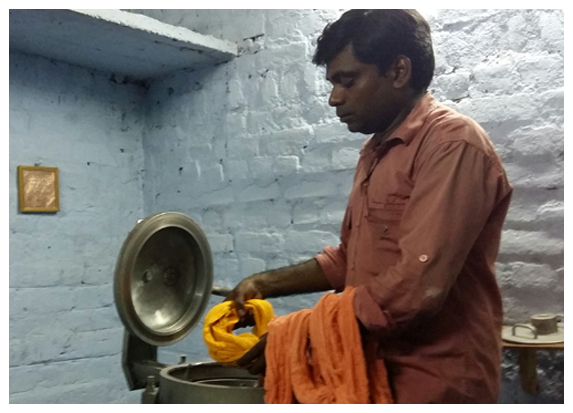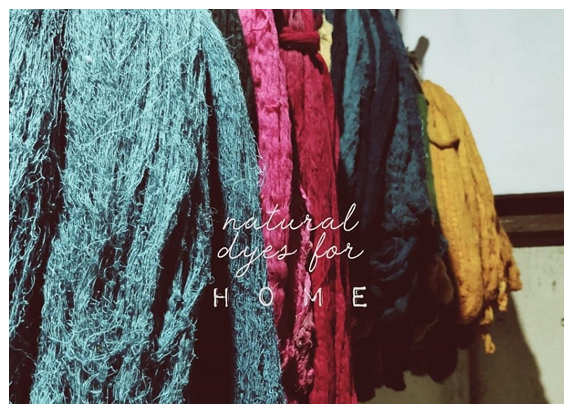The synthetic dyes set off the decline of the natural dyeing and also resulted in major "pollution, to the extent that the dyeing towns have become un liveable" "The water..." contamination is so high in the Tamil Nadu dyeing town of Tiruppur, where a river (noyyal) has turned totally black because of the dyeing effluents. The water used is very high. If virtual water is taken in to account it is way higher. On the other hand Natural Dyes are renewable in nature and their production is harmless and eco-friendly. These are colours derived from renewable sources like plants, minerals etc. Plant sources being bark, berries/fruits, leaves, flowers, roots etc

Natural dyeing is a complex art and the skills required are learned over many years.
Nature smiles in Colors.
The language of Natural dyes is deep and mysterious. It was the way humans spoke for millions of years until the 1850s when synthetic dyes were invented. Currently, natural dye accounts to only about 1% of the total amount of dyes used worldwide, and there is scope for more. Dyeing is an ancient art which was practised during the Bronze age in Europe. Primitive dyeing techniques included sticking plants to fabric or rubbing crushed pigments into a cloth.
Almost any organic material will produce a colour when boiled in a dye-bath, but only certain plants will yield a colour that will act as a dye. For instance, blue indigo is obtained from the leaves of Indigofera tinctoria, yellow from the stigmas of the saffron plant or turmeric, annatto and dogwood from an extract of pulp of the dogwood tree. The most common method used for applying natural dyes is the vat method, and there are techniques like batik, tie and dye etc.
As we fix the colors from natural dyes with mordants, they will fade over time and this must be accepted as the proof of them being natural than see it as a challenge. With the right care, natural dyes can also last long, in fact they can even outlast the life of the fabric.
Palettes of Red from Alizarin, Indigo from Blue, Yellow from Pomegranate, brown from katechu, charcoal from iron filings are all living proof that natural dye sources are versatile and diverse. With natural colours we can create lovely shades of natural Indigo, Pinks, Browns, Olives, mustards, Greys and Blacks. Colour fast dyes can be developed.
They are renewable in nature and their production is harmless and eco-friendly. These are colours derived from renewable sources like plants, minerals etc. Plant sources being bark, berries/fruits, leaves, flowers, roots etc. Natural Dyes provide higher UV absorption in the fabrics they are used on, which protects our skin from harmful sun rays. By using natural dyes rather than synthetic dyes, we are able to closely connect to nature and recognize the importance it plays in all of our lives. There is a growing demand for Organic cotton textiles dyed using natural ingredients
The synthetic dyes set off the decline of the natural dyeing and also resulted in major "pollution, to the extent that the dyeing towns have become un liveable" "The water..." contamination is so high in the Tamil Nadu dyeing town of Tiruppur, where a river (noyyal) has turned totally black because of the dyeing effluents. The water used is very high. If virtual water is taken in to account it is way higher.
The ground water also is highly contaminated in these areas. Taking stock of the various pollutants, long term environmental impact and our own health the world (especially the west) is turning back to natural dyes. while each of the color derived means a host of experiments and hand process. To help your own health and that of the environment and to revive the dy(e)ing art, support Natural dyeing.

Natural dyes are slightly expensive and time consuming due to their source material, but can be used for large scale operations and small batches too.